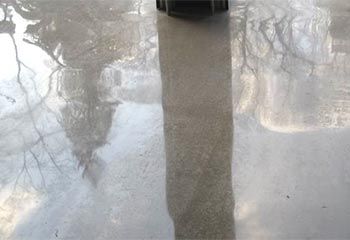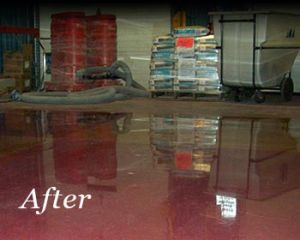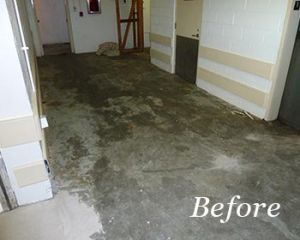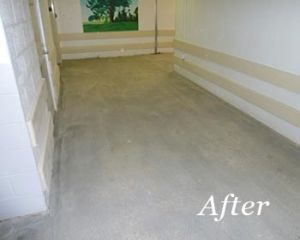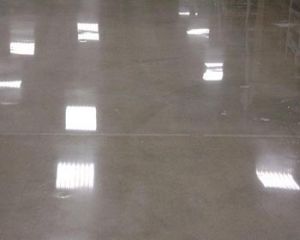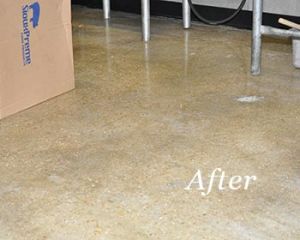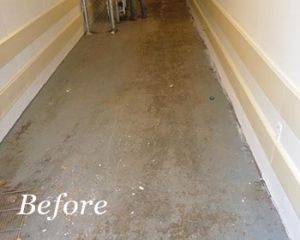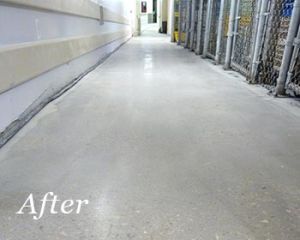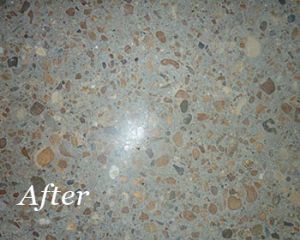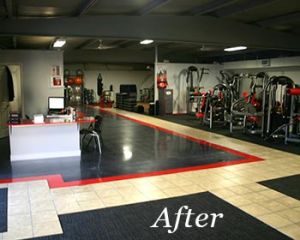Slab and Mix Design
- Lightweight aggregates should be avoided as they can crack and spall during the process.
- Water/cement ratio should be between .42 and .5. Higher water/cement ratios can lead to a weak surface layer.
- Air entrainment should be avoided as it can cause the surface to spall and delaminate.
- Curing compounds should be avoided. Slabs should be cured with blankets or sheeting. Curing compounds can slow the initial grinding process.
- Floor flatness should be FF50 (ASTM E1155-96). FF levels below 50 can show an inconsistent reflection, aggregate exposure, and sheen as can be seen in the photo below.
- Integral colors can be effective in areas that will receive high amounts of UV exposure.
- The slab needs to be protected prior to and after polishing. No abrasive materials should be placed on the slab, any machinery should be diapered, food and drink should be kept off the slab, welding, pipe fitting and mechanical work should be conducted in a way as to prevent slag or other materials from falling on the slab.
- Flatwork and polishing contractor must have a pre-construction and pre-polish meeting to agree on desired and actual outcomes.
Our Work in Polished Concrete Flooring


